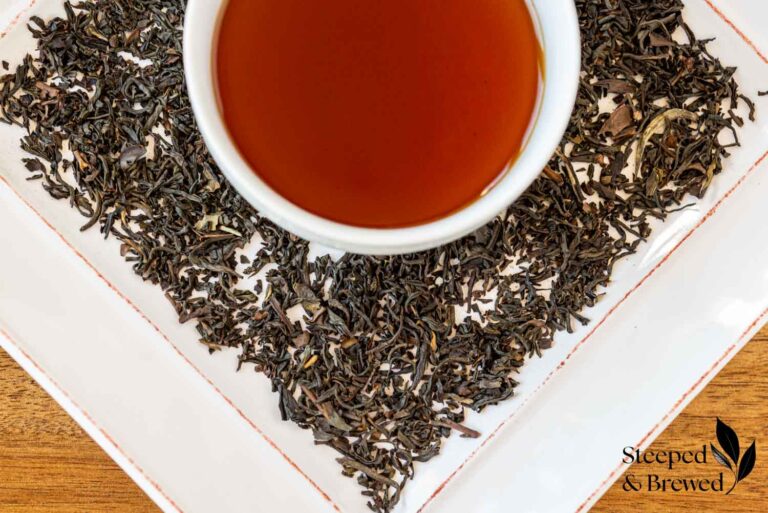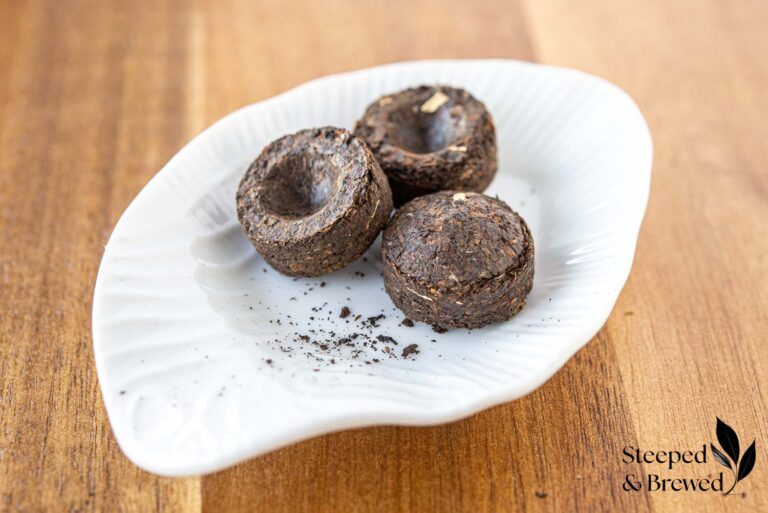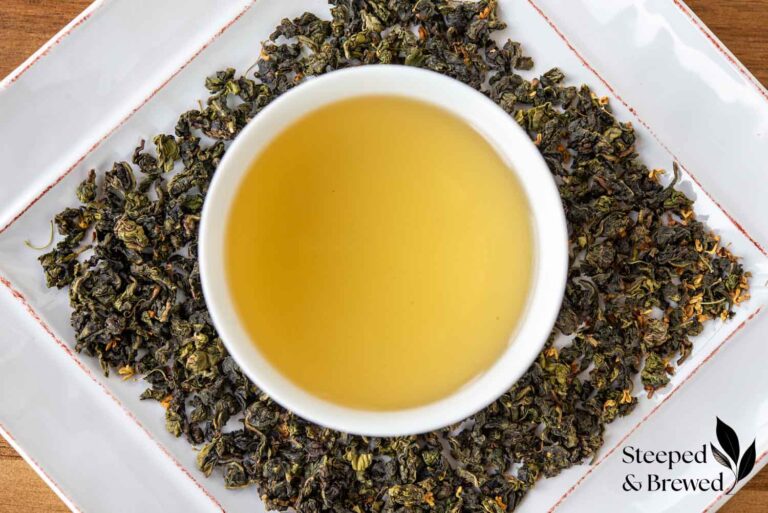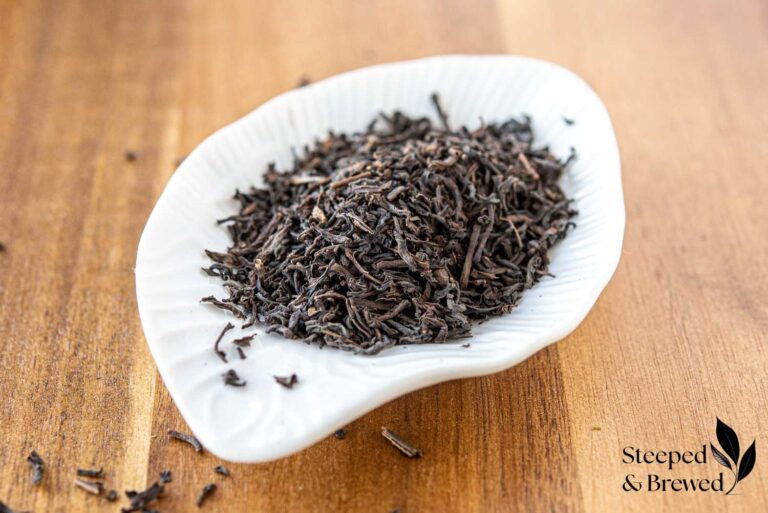This post may contain affiliate links. That means if you click on a link and make a purchase, I may make a small commission at no additional cost to you. Thank you for your support!
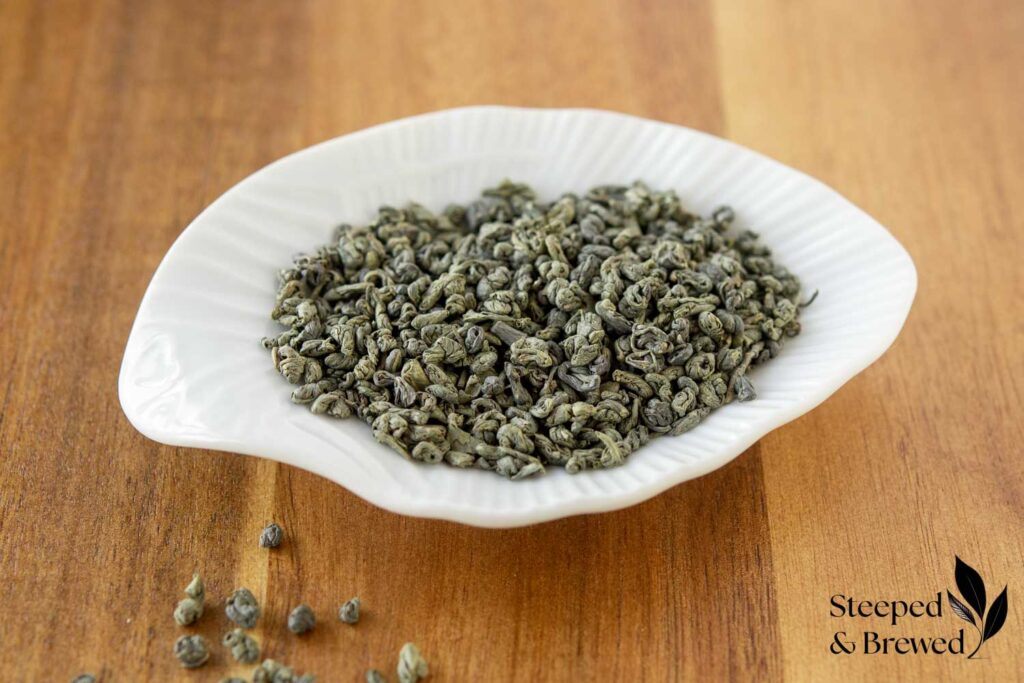
For nearly as long as I can remember, I’ve had a deep-rooted affinity for tea – black tea to be precise. My love affair with this invigorating elixir started during my teenage years, on a visit to the renowned Empress Hotel in Victoria BC for an elegant afternoon tea. I’ve always been drawn to bold black teas, preferably with a splash of cream. So yummy! However, I realized I’ve been sitting in my comfort zone, oblivious to a whole universe of tea flavors! We’re talking about the refined whites, the delectable oolongs, and the sumptuous darks. It’s an exciting world, full of unexplored flavors! So, how about we embark on this thrilling journey of tea exploration together? Shall we begin?
Let’s start with the basics. There are 6 main types of tea – white, green, yellow, oolong, black, and dark tea. Each type has its unique characteristics and flavors.
White tea is made from young leaves and buds, offering a delicate and subtle flavor. Green tea is unoxidized and has a fresh and grassy taste. Yellow tea is similar to green tea but undergoes a unique processing method, resulting in a smoother and sweeter flavor. Oolong tea is partially oxidized, resulting in a range of flavors from light and floral to rich and smoky. Black tea is fully oxidized and has a bold and robust taste. Dark tea is fermented and has an earthy and rich flavor. Let’s explore some more…
“You can’t get a cup of tea big enough or a book long enough to suit me.” – C.S. Lewis
What makes tea, well, tea?
Tea, in its truest form, comes from the camellia sinensis plant. This particular evergreen shrub is the source of all types of tea. The process of creating tea involves several steps, including harvesting, withering, rolling, oxidizing, and drying. Each type of tea undergoes some version of these steps, resulting in its unique characteristics, flavors, and brewing methods.
Herbal blends, such as chamomile or peppermint, are not technically considered tea. Instead, they are referred to as herbal tisanes. These tisanes are made from various herbs, flowers, and spices, and do not contain any leaves from the camellia sinensis plant. So, that cup of chamomile you enjoy before bed is actually a chamomile herbal tisane, not chamomile tea. However, if you want to avoid tea snobbery, the next time you are at your favorite coffee shop and want a cup of chamomile, don’t order a “chamomile tisane”. Keep it simple, ask for a cup of chamomile tea and enjoy! After all, what really matters is enjoying a tasty beverage, regardless of its technical classification.
The 6 main types of tea
White Tea
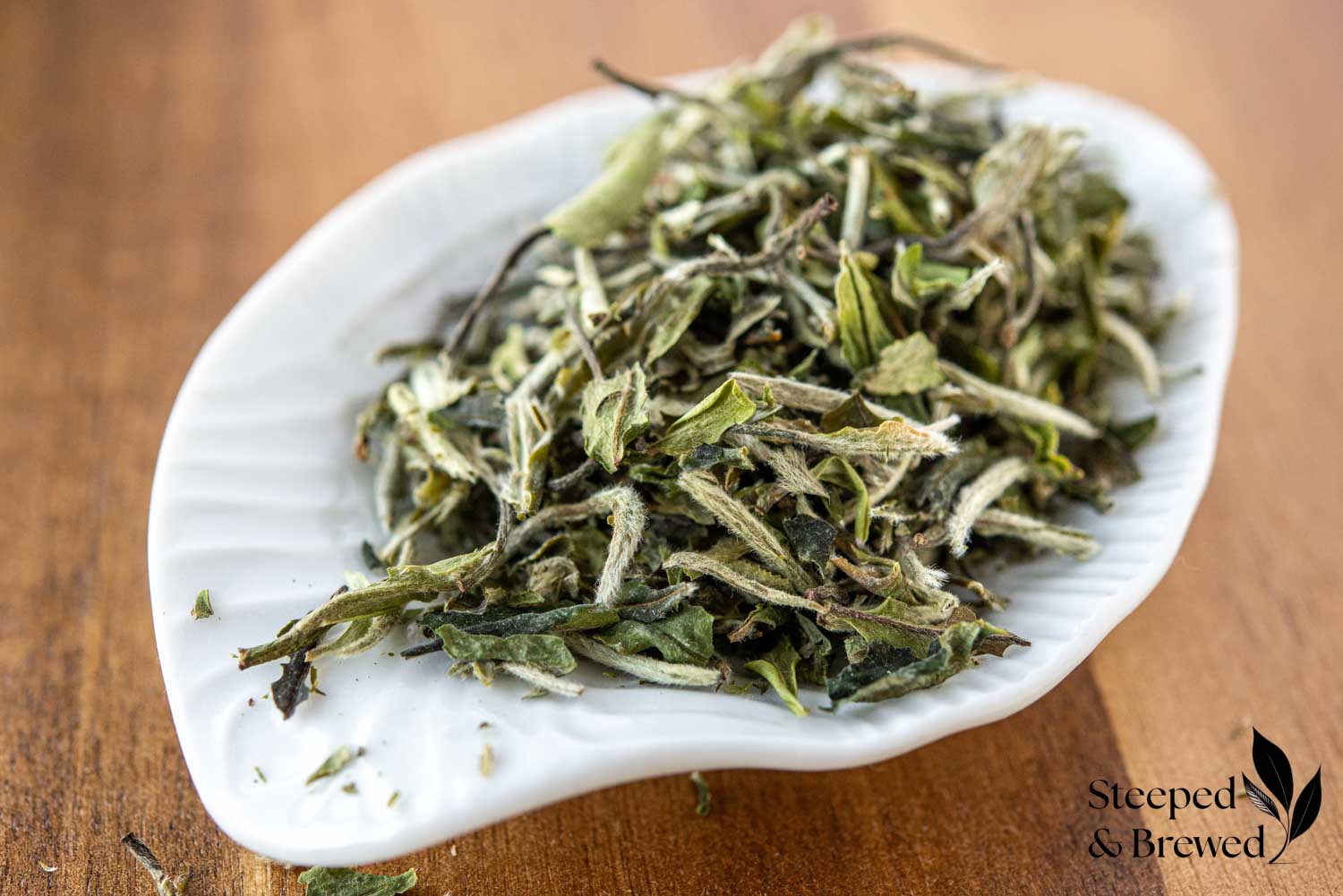
White tea is a somewhat rare and expensive tea but is becoming more readily available. Made from the young leaves and buds of the camellia sinensis plant, white tea is known for its light color and delicate grassy, sweet, and fruity flavors. To make white tea, the leaves and buds are carefully hand-harvested and then gently dried. As the leaves dry, they turn from light green to silver, hence the name, white tea. White tea is minimally processed, resulting in a tea that is light and smooth, with a subtle sweetness.
Contrary to popular belief, white tea leaves are not low in caffeine. The leaves often contain more caffeine than either green or black tea, but because it is steeped at a low temperature for a short period, the resulting cup of brewed white tea will generally be lower in caffeine.
Many describe white tea as lightly sweet and silky, often with notes of honey, melon, peach, or jasmine. Its taste can be wonderfully subtle, with a velvety mouthfeel. The color is pale yellow and the aroma is fresh and lightly floral. Unlike its darker counterparts, white tea lacks astringency, resulting in a smooth, refreshing cup.
Green Tea
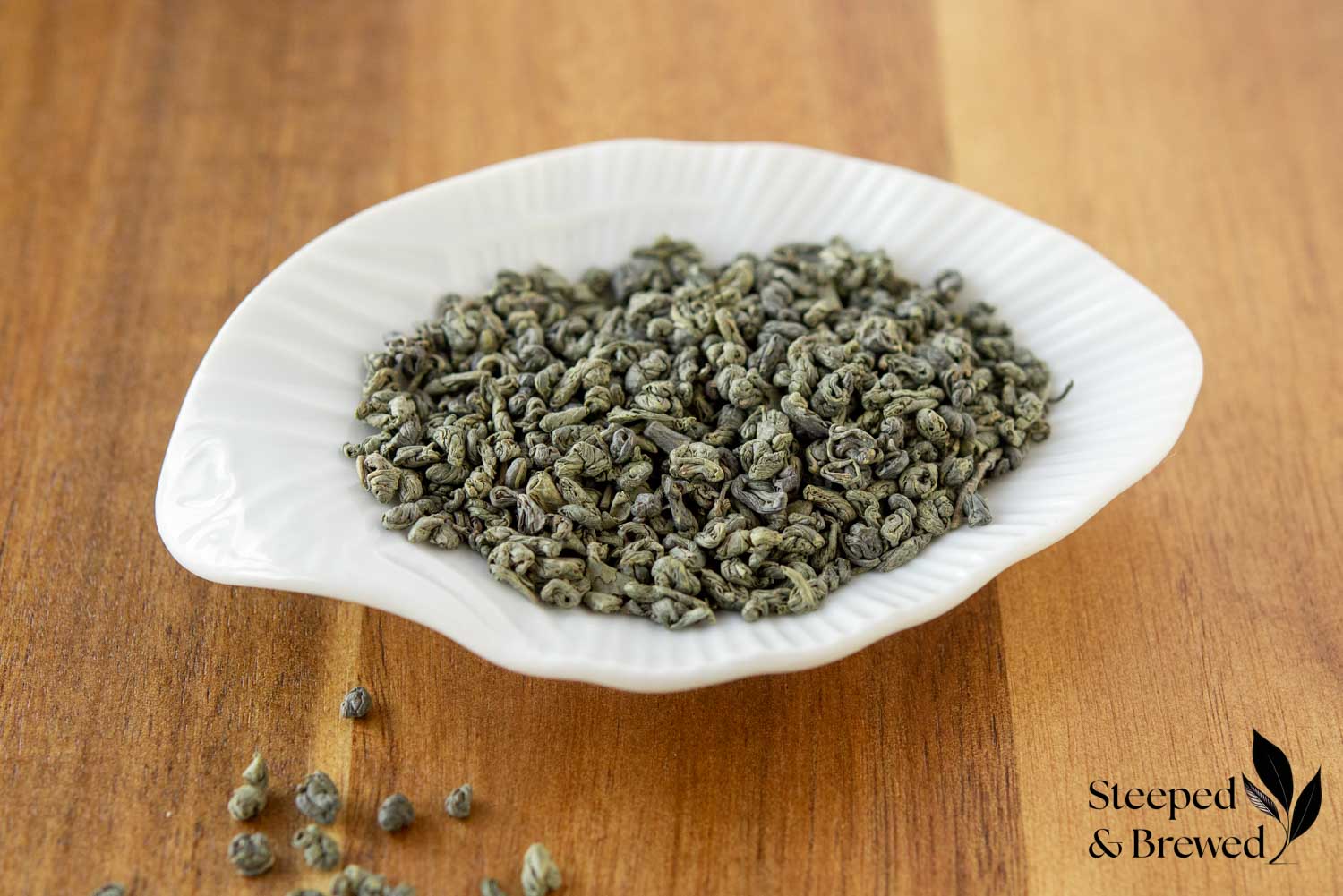
Made from the leaves of the camellia sinensis plant, green tea is known for its vibrant flavor, light color, and delicate aroma. It is grown in various regions around the world, including China, Japan, and India. To make green tea, the leaves are harvested and quickly heated to minimize oxidation. This process helps to retain the natural green color and fresh taste of the tea, as well as retaining much of the tea’s natural antioxidants.
Typically, green tea is refreshing, with a subtly bitter and clean taste that can be quite rejuvenating. The specific flavor can however vary quite a bit depending on the region of growth, harvesting time, and processing methods. It can often carry grassy, vegetal notes, while some possess a sweet, fruit-like undertone. Others can even have a subtle roasty flavor.
Yellow tea
Before I started my tea research, I hadn’t heard of yellow tea. It is a unique, rare, and expensive tea. Many “yellow teas” you see on the market are fake – green teas passed off as yellow. Yellow tea is primarily grown in China, with a hands-on and labor-intensive production process. The leaves are first withered and then briefly wok-fried at a low temperature. The warm leaves are then wrapped in a cloth or paper and allowed to oxidize slowly. This oxidation process is what makes yellow tea unique, and gives it its characteristic yellow color. Yellow tea’s mellow flavor, yellow color, and delicate aroma make it a favorite among rare tea enthusiasts.
As of the writing of this article, I have not tried yellow tea. If you have, let me know what you think of it in the comments below.
While the process of producing yellow tea is complex, the result is a truly special flavor profile. It’s softer and gentler than green tea while still maintaining a subtle, fresh grassiness. Descriptions often include words like ‘smooth’, ‘mellow’, and ‘sweet’ – a hint of honey-like sweetness lingering after each sip. The aroma, too, is softly scented, with a light floral or fruity note.
Oolong tea
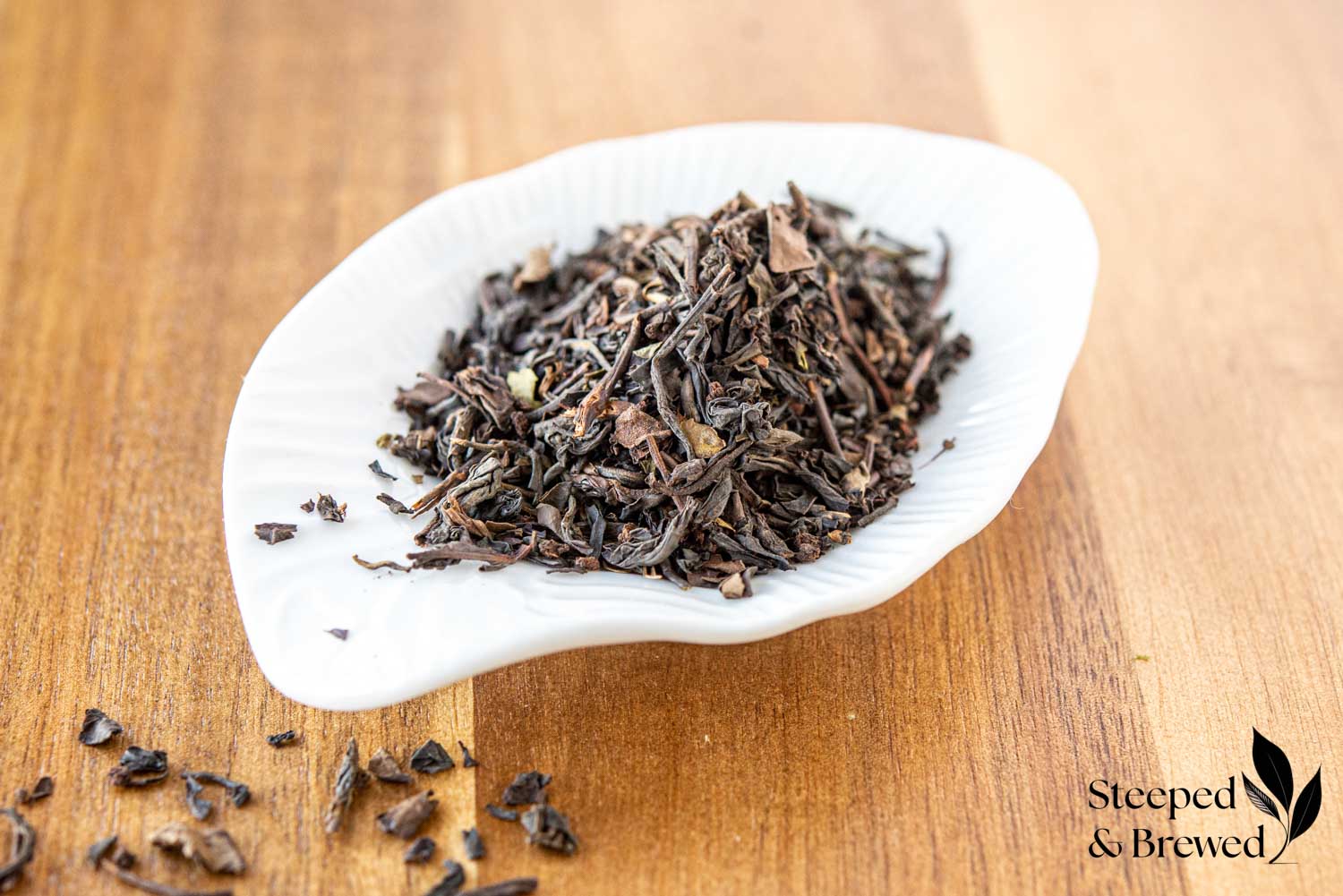
Oolong tea sits between green and black teas in terms of oxidation. It is made from the leaves of the camellia sinensis plant, just like all other types of tea. However, oolong tea undergoes a unique production process that gives it its distinct flavor, color, and aroma. Grown primarily in China and Taiwan, oolong tea is known for its very wide range of flavors and aromas. The flavor profile can vary from light and floral to rich and smoky, depending on the specific type of oolong tea. The color of oolong tea ranges from pale yellow to dark amber, while the aroma can be delicate and flowery or robust and earthy.
The flavor of oolong tea often starts with a floral or fruity note, then progressively unveils layers of creaminess, sweetness, and even a touch of bitterness for a well-rounded experience. Depending on its oxidation level, the flavor can lean more towards fresh and grassy like green tea, or veer towards the deep maltiness of black tea. It’s the delightful unpredictability and richness of oolong’s flavor profile that truly sets it apart.
Learn more about Oolong tea in my article, “Oolong Tea: what is it, how it’s made, brewing tips & more“.
Black tea
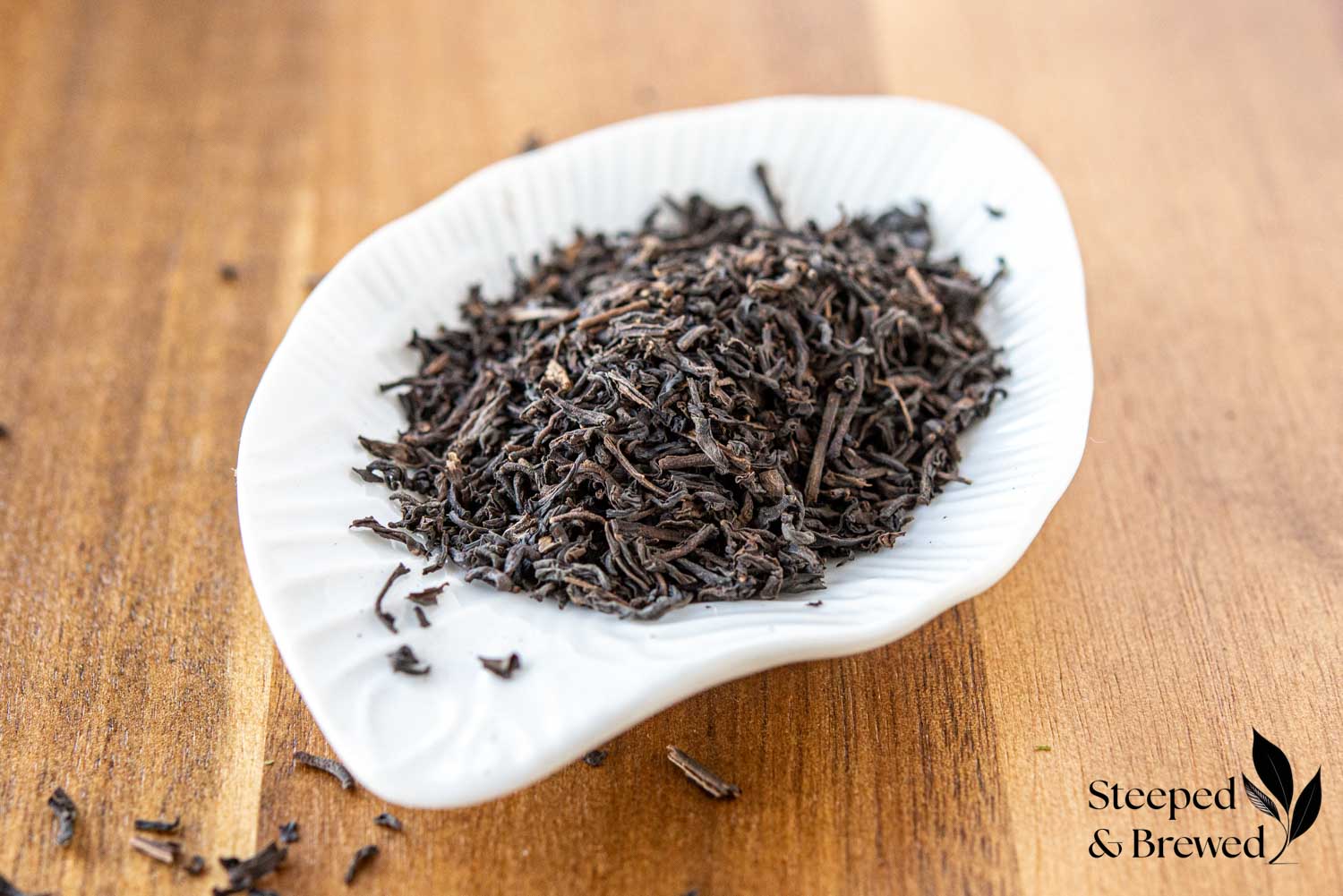
Black tea, sometimes called red tea, is a popular and widely consumed type of tea that is known for its bold and robust flavor. It can be enjoyed plain or with milk, sugar, or other flavorings. Just like all other types of tea, it is made from the leaves of the camellia sinensis plant. The leaves are harvested, withered, rolled, oxidized, and dried to create black tea. Black tea is grown in various regions around the world, including India, Sri Lanka, China, and Kenya. Much like wine, each region produces black tea with its own unique characteristics and flavors. A few common types of black tea are Assam, Darjeeling, and Ceylon, each with unique characteristics that we will explore in other articles.
The flavor profile of black tea is rich and robust with a characteristic malty sweetness. Many black teas also possess a certain earthiness, hinting at notes of spices, nuts, chocolate, or even a tinge of citrus.
Dark tea
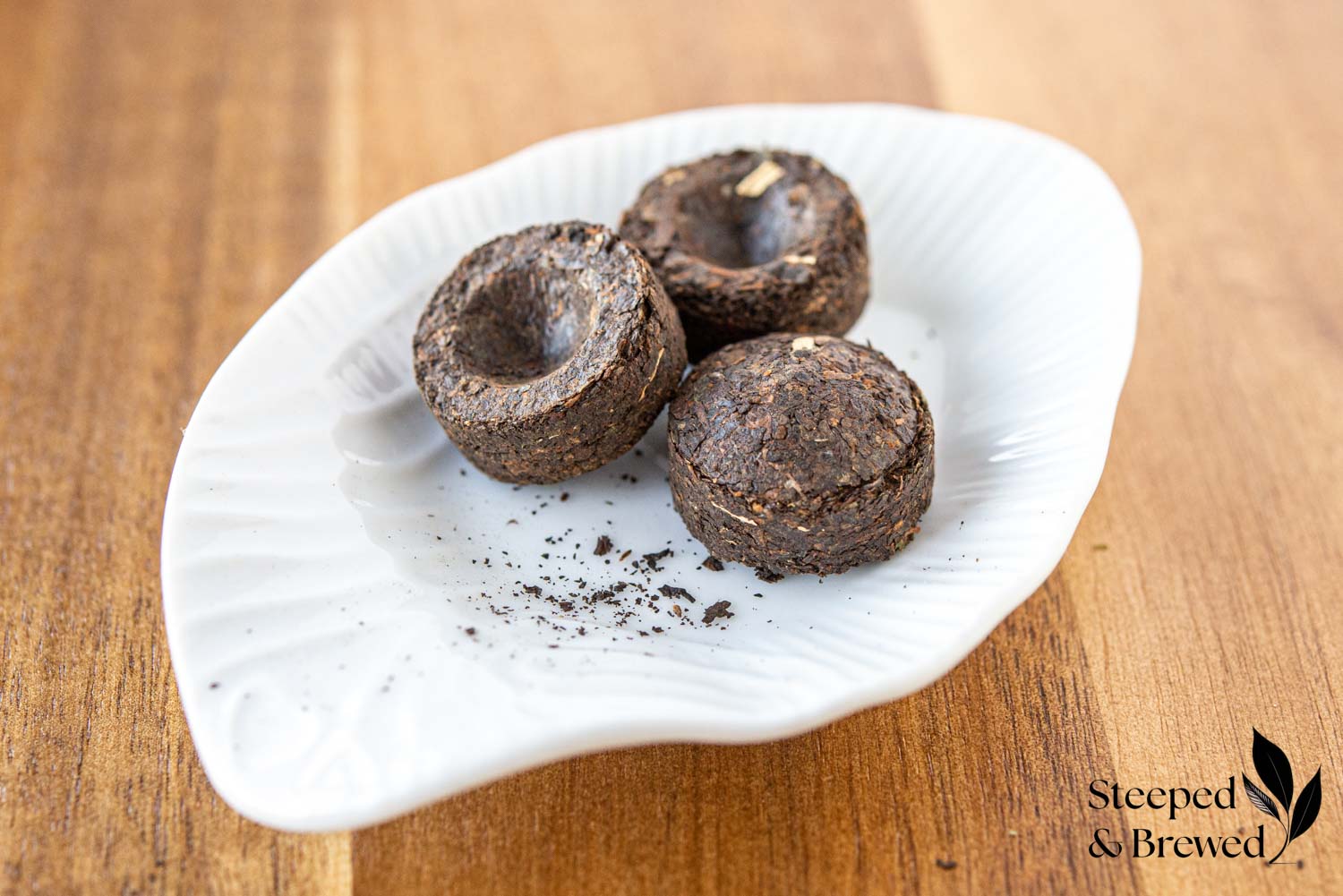
Dark tea is a unique and fascinating type of tea that has gained popularity in recent years. The most well-known of the dark teas is pu-erh, which comes from the Yunnan Province in China. Dark teas from other regions should not technically be called pu-erh, but are often labeled or categorized as such.
The leaves of the camellia sinensis plant are harvested and then undergo a special fermentation process that gives dark tea its distinct flavor, color, and aroma. It is often pressed into square bricks, round disks, or other unique shapes, and then aged for years or even decades.
Dark tea has a rich and earthy flavor profile, ranging from smooth and mellow to bold and robust, depending on the specific type and age of the tea. The longer it’s aged, the smoother, deeper, and more refined the flavor becomes. It can sometimes be described as musty or barnyardy, with hints of tobacco, damp earth, or aged wood, and has a nearly black coffee-like color when brewed.
Learn more about pu-erh, the most popular type of dark tea in my article Exploring Pu-erh Tea: what is it, how it’s made, brewing tips & more.
Quick tea overview
What’s in my cup

Harney & Sons Japanese Sencha Green tea, Loose leaf 4 ounce
Buy Now →
Harney & Sons Organic Gunpowder Green, Loose leaf 8 ounce tin
Buy Now →
Harney & Sons Formosa Oolong, 3oz Tin of Loose Tea
Buy Now →
Harney & Sons Ceylon & India Tea | 4oz Tin, Loose Leaf Tea, also known as Orange Pekoe
Buy Now →Wrapping up
Thanks for joining me on this brief overview of the six different types of tea. From the bold and robust flavors of black tea to the delicate and refreshing taste of green tea, there is something for everyone. I would love to hear more about your favorite types of tea – let me know in the comments below. Also, be sure to let me know what your biggest tea questions are. Happy tea drinking!
Would you like to learn more about how to brew your favorite tea? Hop over to “A beginner’s guide to brewing tea” to get all the details!


